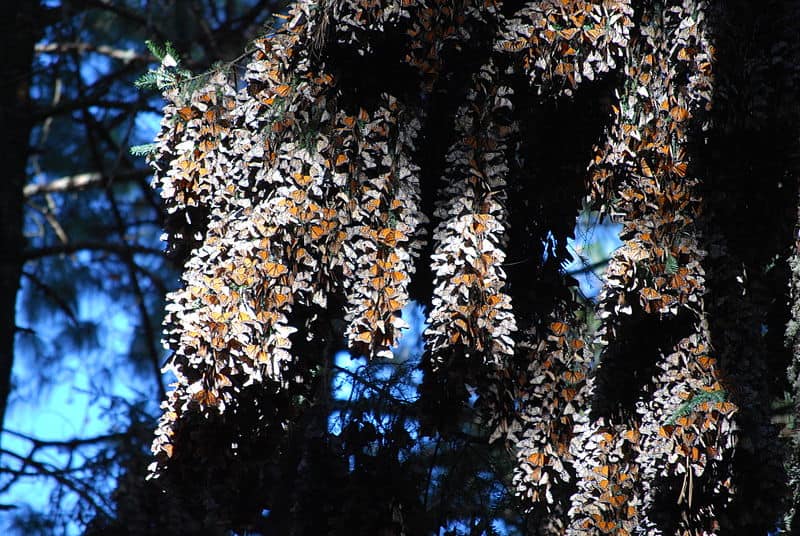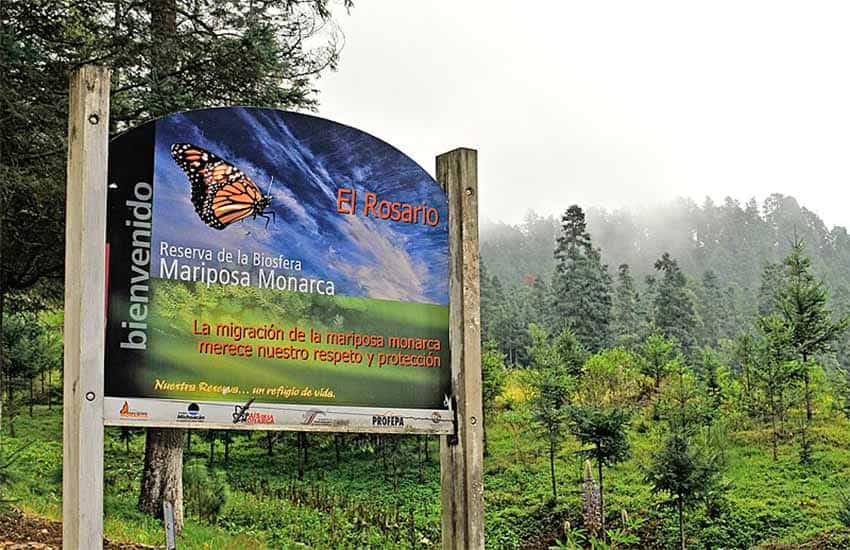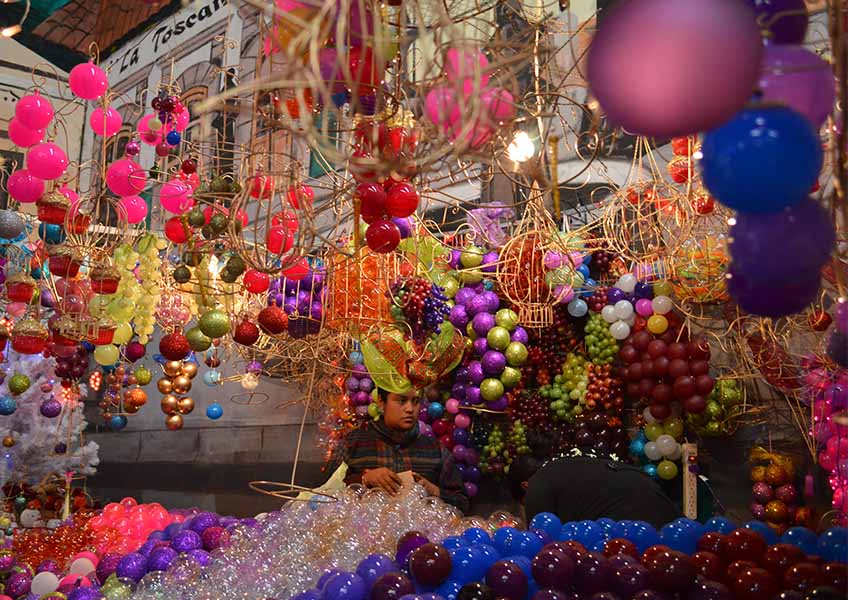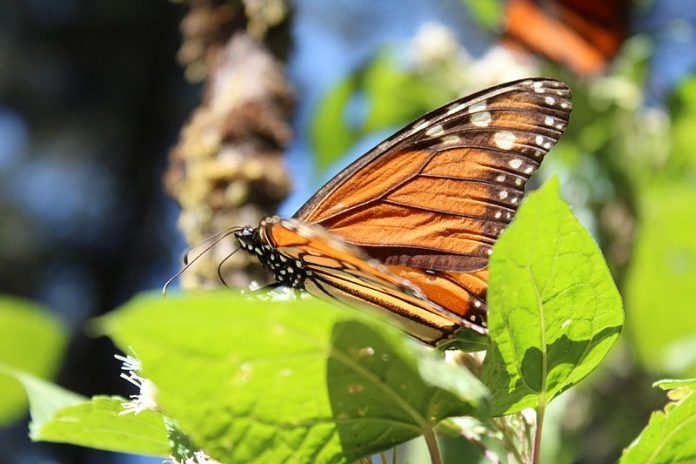After years of concerns about its viability, this past July, the migratory monarch butterfly (Danaus plexippus) was officially declared endangered by the International Union for the Conservation of Nature (IUCN). The organization blames habitat loss and climate change for reducing numbers so much that there may not be enough of a population to reproduce.
Those that winter in California are nearly extinct now, but there are serious concerns about those who fly up to 4,500 km from Canada and the United States to wintering grounds located in the high pine forests at the México state–Michoacán border.
In 1986, Mexico declared over 56,000 hectares of their wintering area as protected land known as the Monarch Butterfly Biosphere Reserve, but habitat destruction, especially logging continues to degrade the insects’ habitat.
Only 100 km from Mexico City, 135 from Morelia and 185 from San Miguel Allende, the butterflies are a major attraction during the season that runs from late November to March. Certain sections of the biosphere reserve, called “sanctuaries,” are open to the public.

There are six major ones (meaning they are the most likely to have their permits in order): three each in Michoacán and in México state. Those in Michoacán — El Rosario, Sierra Chincua Angangueo and Sierra Chincua Sénguio — are the most popular, with El Rosario alone welcoming up to 1 million visitors a year.
The popularity has its downside. Ellen Sharp has worked with monarch butterfly tourism and activism for a decade, and is currently writing a book about her experience called “Fragile Messengers.” She states that there are concerns about so many visitors stressing the monarchs.
“People should think about visiting throughout the November–March season and not the oversubscribed month of February,” she says, “Also, try to schedule your visit during the weekdays if at all possible.”
Another good idea is to visit lesser-known sanctuaries, such as those in México state: Piedra Herrada in Temascaltepec, La Mesa and Cerro Pelón, where Sharp did her work. All the sanctuaries offer similar experiences, guided tours on foot or horseback, with restaurants or other food and some other ecotourism attractions.
The smaller sanctuaries have less information available online. Best to check with the site of the Biosphere Reserve and the tourist information centers in the region’s Pueblos Mágicos (El Oro, Valle de Bravo, Angangeo and Tlapujahua) to find out the latest information on visiting.
To preserve the butterfly — and the tourism — there are a number of rules and recommendations to follow. Some are pretty obvious, such as keeping your distance from the creatures and not touching or otherwise bothering them, as well as not throwing trash, not bringing pets and not damaging the flora.
Others are less obvious: sanctuaries strongly recommend silence to maintain the general forest ambiance. They also advise staying on marked trails to keep erosion issues to a minimum. Renting a horse is also highly recommended. Not only is the terrain extremely rugged, the rentals are an important source of income for locals.
Sharp has one other important tip. “Watch where you are walking: many people step on butterflies while they’re looking up with their cameras.”

Some sites recommend that you report anyone breaking the rules, as well as illegal logging if you witness it. The first piece of advice may not be practical advice for foreigners, however, and the latter piece could be dangerous if the logging is being done by organized crime members, a real possibility.
But perhaps the best way to contribute to the long-term well-being of the butterfly sanctuaries is to support the communities that live in the region. This is a very poor area of Mexico, in large part because the mines here closed many decades ago. Although logging is severely restricted, both locals and cartels still cut trees here because of poverty and the money the lumber is worth.
Most visitors to the region are daytrippers who contribute little to the local economy, so staying a couple of days and taking advantage of services and attractions both inside and surrounding the sanctuaries go a long way to helping locals out. Sharp strongly recommends tipping guides and horse handlers generously and to avoid tours organized by entities from far outside the region.
Sanctuaries and areas near them have all kinds of ecotourism attractions including cabins, mountain bike rentals, rappelling, zip-lines, local handcrafts and other products. Of course, there’s also local food.
Some of the more unusual tourism offerings include a deer-breeding program at La Mesa that you can visit and a festival in Ocampo, Michoacán, which welcomes the arrival of the butterflies each year with a festival featuring children in butterfly costumes and traditional Purépecha songs. This year’s event is on November 18th.
In addition, the region is home to several Pueblos Mágicos — Mexico’s historic towns full of hotels and restaurants and tourism activities. Michoacán has Tlalpujahua and Angangeo, and México state El Oro and Valle de Bravo. Tlalpujahua has an annual Christmas Ornament Fair that runs from September to mid-December.
Although the concerns about the butterfly’s survival are real, there are some positive signs. The number of butterflies wintering in Mexico rose 35% last year, and there is some hope that this will continue. Local communities are more invested in the insect as the economy shifts.
Locals say increased police presence in the region has helped with illegal logging, and programs like El Rosario’s 1 million tree reforestation project are helping to repair the damage.

The official start of the season is November 27, 2022.
Leigh Thelmadatter arrived in Mexico 18 years ago and fell in love with the land and the culture in particular its handcrafts and art. She is the author of Mexican Cartonería: Paper, Paste and Fiesta (Schiffer 2019). Her culture column appears regularly on Mexico News Daily.
